Crafts from salt dough look very unusual, and the process of modeling itself is very fascinating. Such an occupation is perfect for small kids who will be interested to make some feature from the salt dough. In this material, we will try to sculpt from salt dough, training in stages passes on interesting and informative master classes on the modeling and cooking test.
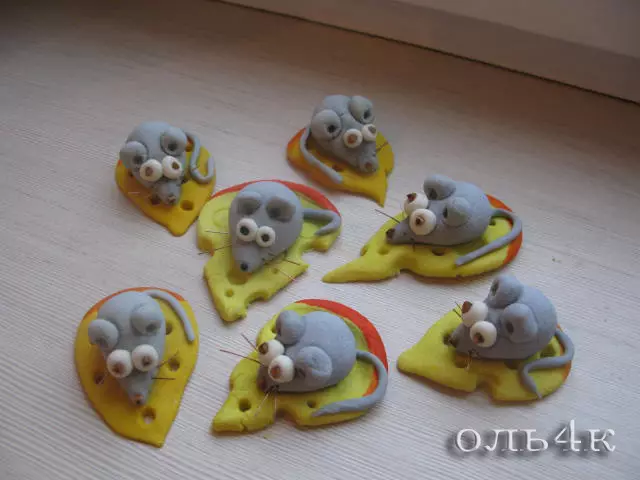
Recipe test for modeling
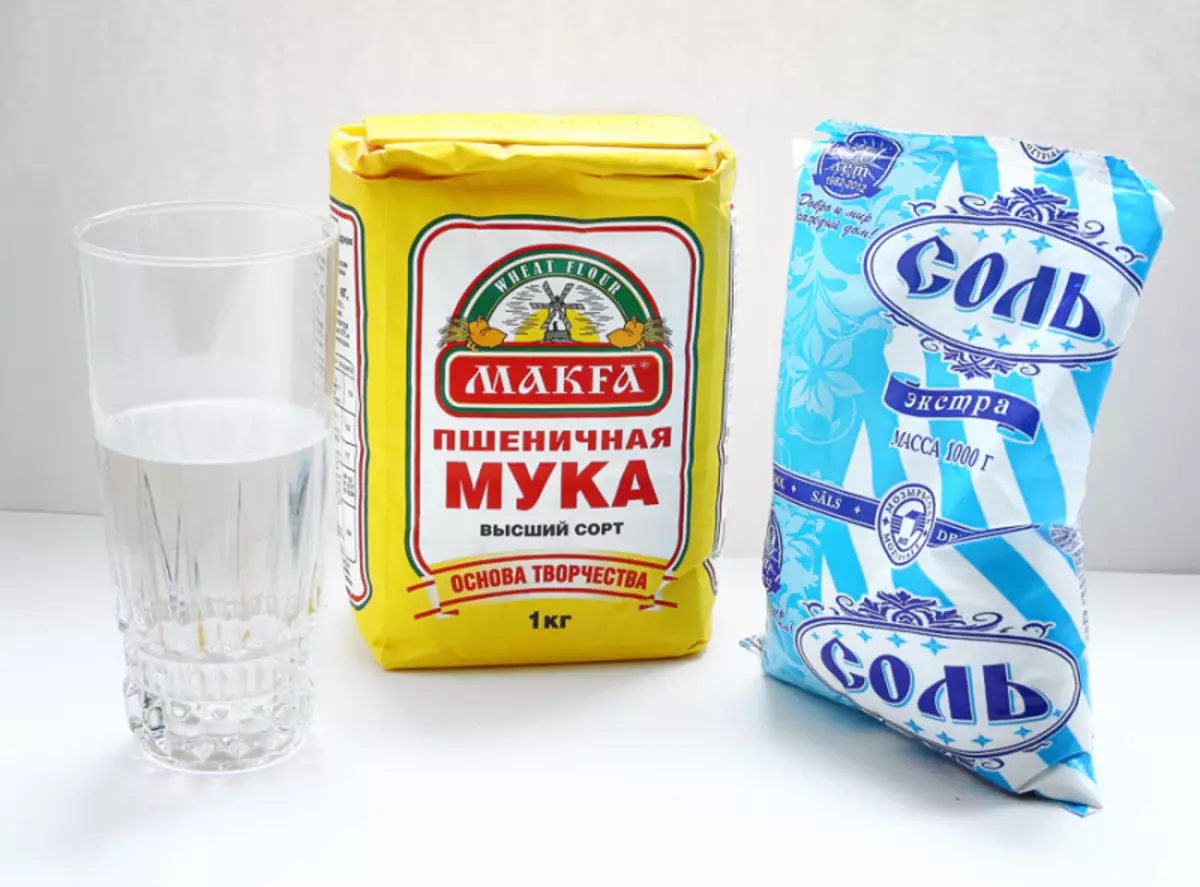
Preparation of the dough for modeling is different from the recipe for baking dough. So, for work, you need to prepare the following ingredients:
- flour (2 art. l.);
- salt (1 tbsp. l.);
- water (125 ml);
- Moisturizing hand cream (1 tbsp.).
All components need to be connected and thoroughly mix to homogeneous consistency. You can resort to the help of a blender or mixer, so the process will go quickly. As a result, you will have a very soft material that will be very convenient when working.

Interesting figures
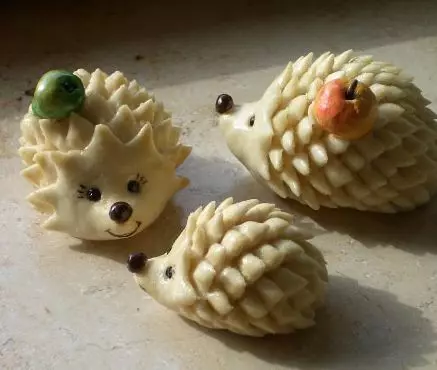
We offer you the first master class you can spend with children. From the test we will do a nice hedgehog.
First, from the test prepared test, you need to form a small ball and make pointed spout.
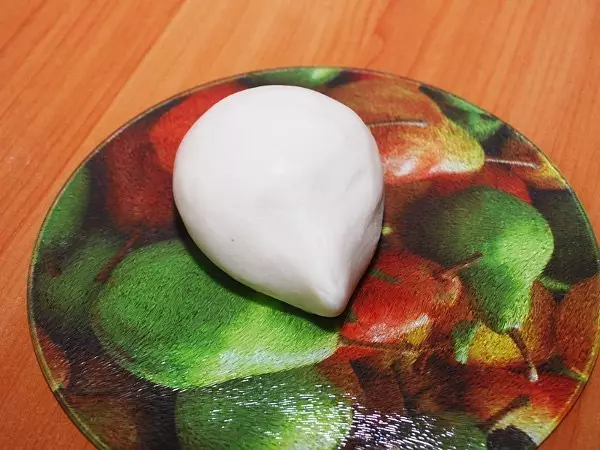
Now you need to twist three small balls, paint their black paint, make eyes and spout of them. Then there are small scissors, with their help you need to cut the needles for our hedgehog.
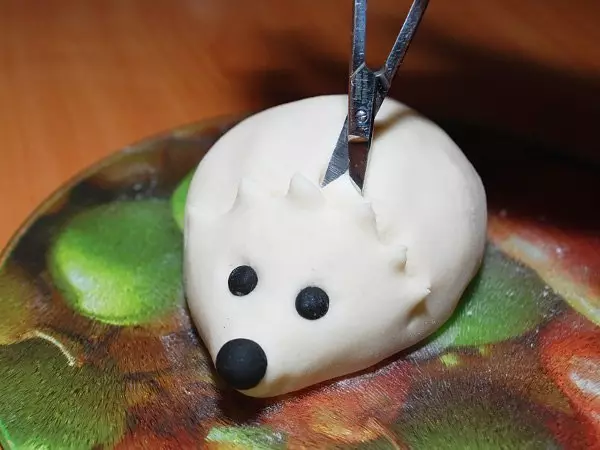
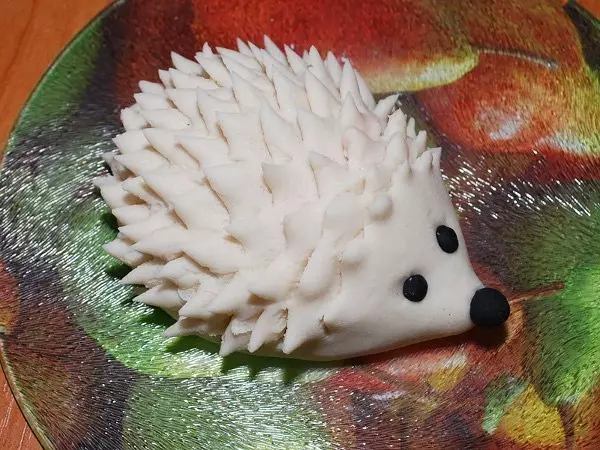
Eyes can be made from beads, buckwheat and so on, the main thing is to do it for them to fools so that our hedgehog does not get too naughlase.
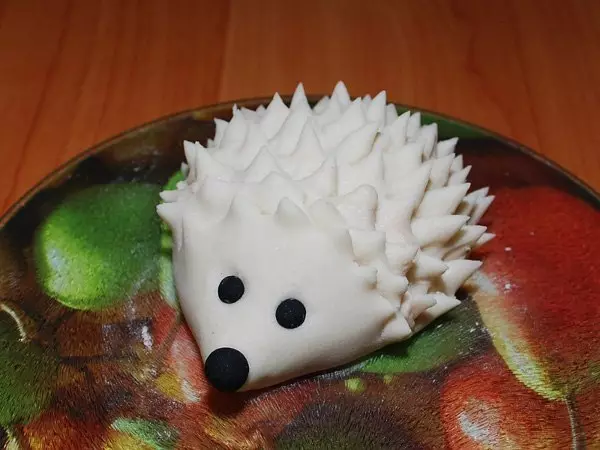
Now you need to make a small apple, mushroom, leaf and so on. Color him with gouache, and cover with a varnish on top.
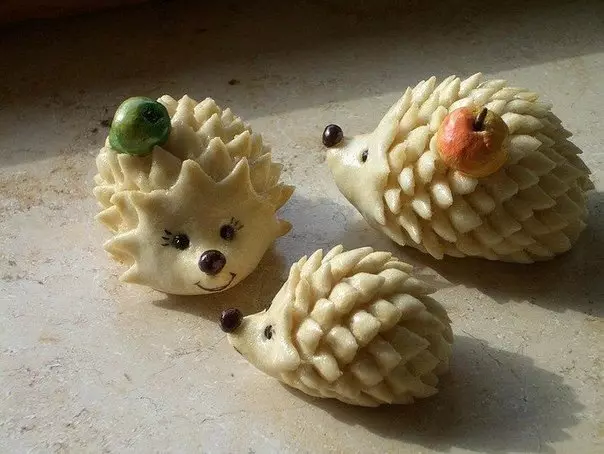
The finished product should stand in a dry place about a week, it can also bake in the oven.
Article on the topic: how to sew a decorative pillowcase
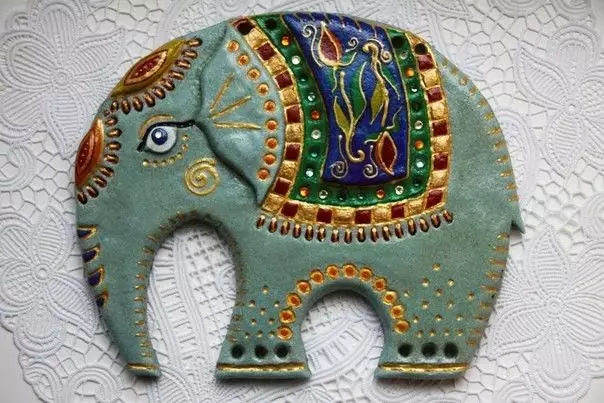
Compositions from dough
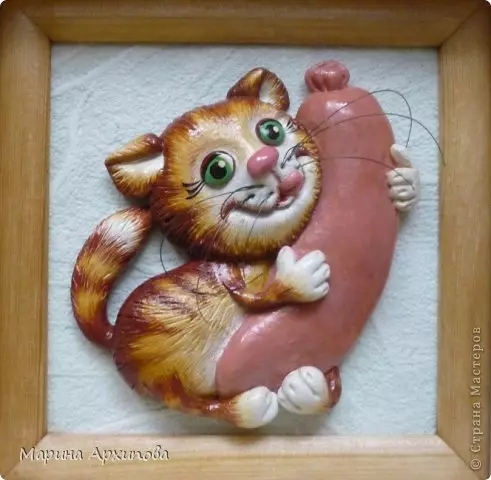
From the test, not only small souvenirs, but also whole pictures. When creating such "masterpieces", you need to follow clear recommendations:
- The dough should be tear off in small pieces, as in the air it is very quickly covered with a crust;
- Elements are connected not by the help of glue, but, oddly enough, ordinary water;
- The picture is done on the foil, and only after later it is transferred to the picture canvas;
- The finished product must be dried in a warm place, you can dry it in the oven;
- The finished product should be covered with gouache, and then two layers of varnish;
- The finished composition is attached to the tissue, can be used canvas, and decorated into the frame.
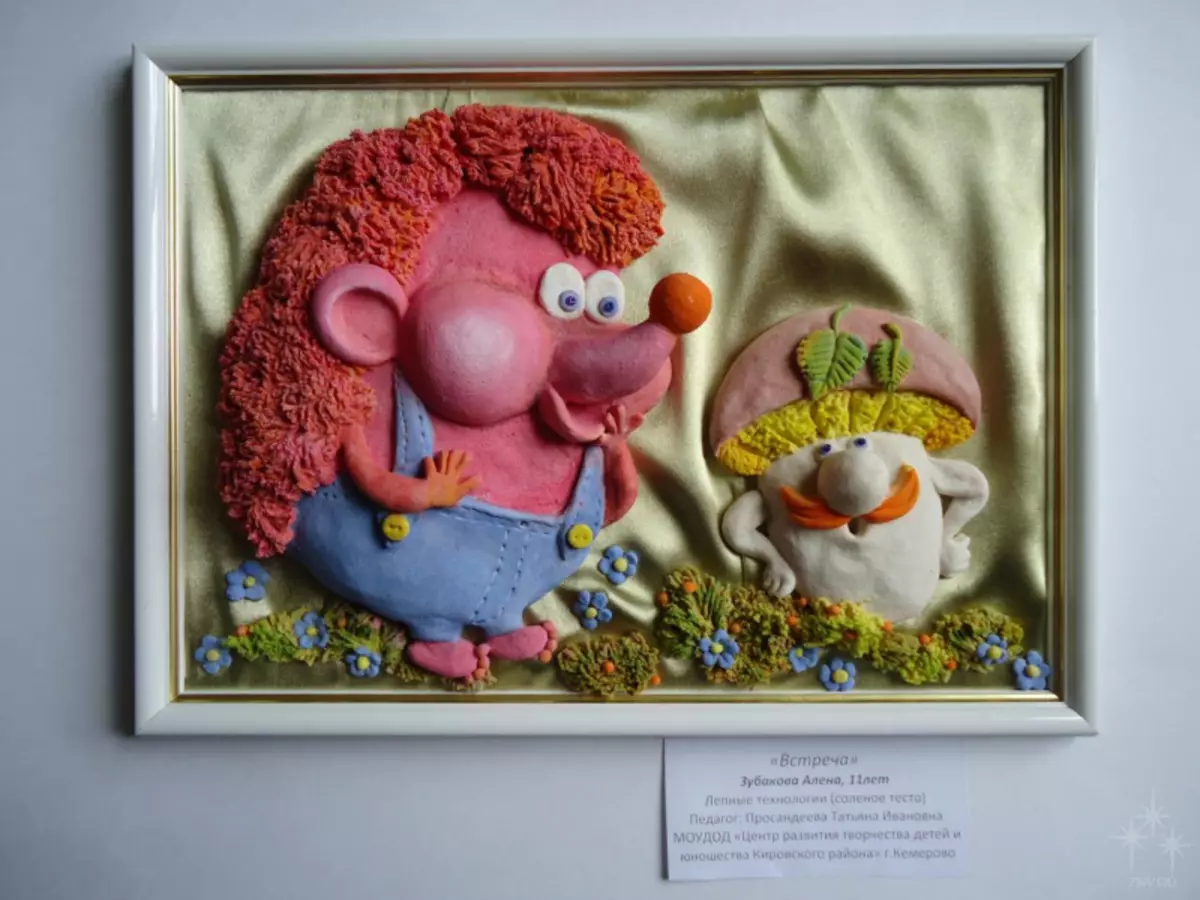
Very often, flowers are made from the dough, on the basis of which amazing compositions are built. For one flower, you need to prepare several small balls, of which the petals are subsequently done, they are superimposed on each other and the flower is made from this tape. How the flower is done, clearly you can see in the photo below:
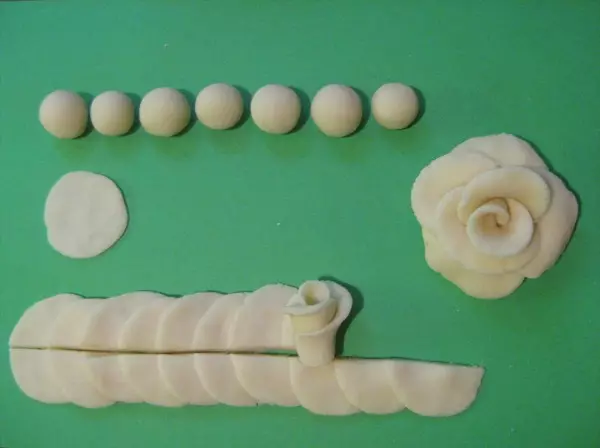
The composition of flowers can be supplemented with a cute sovuchka, which is completely simple, the detailed photo instruction in its creation is attached below:

Drying methods:
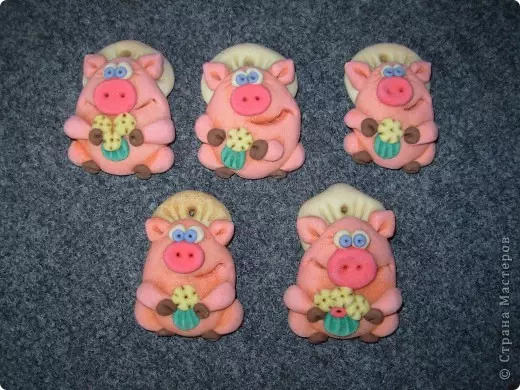
- Preheat oven. The oven you need to warm up to 55 degrees, the product is fitted in the oven, but at the same time the door of the oven can be ajar. The product must be dried in the oven for an hour, possibly longer.
- Also, the product can be dried outdoors, but the sun rays should not fall on the product. You will have to dry out the outdoor product. You will have about 3-4 days, but in no case do not dry the product on the battery, so it cracks and can fall apart.
- Another method with the oven, it should be originally cold. The product is placed in the oven, and it warms up to 150 degrees, after the oven is warm up, it turns off and cools off the product inside.
Article on the topic: Triangular shawl crochet. Scheme
Useful recommendations:
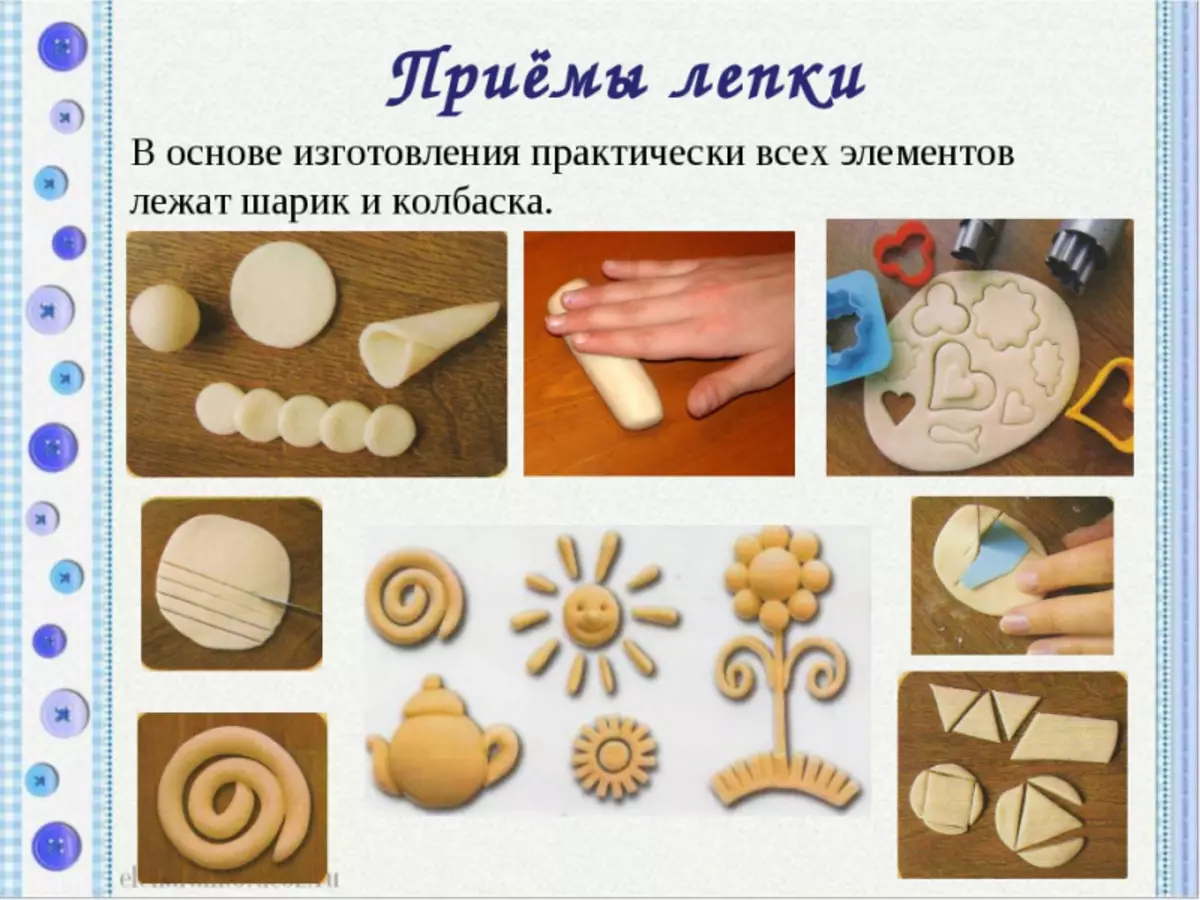
- To prepare the test you need to use only wheat or rye flour. Salt should be not iodized.
- Water to knead should be cold, even closer to the ice. We do not add all the water immediately, but a little in small portions.
- The dough should not be too sticky or fragile. If the material turned out not sticky, add some water, and if on the contrary, it is too sticky - a bit of flour.
- Ready dough if you have extra pieces, a week can be stored in the refrigerator. Even if you make a bulk work, it is better to take a small portion, and keep the main mass in the refrigerator in a plastic bag, take the dough as needed during the work.
- It is optionally to paint the finished product, you can add dye during the kneading test, for these purposes any food dye or paint, which is used to paint eggs.
- The modeling from the salt dough has its own term, it is called testoplastic, and has not only entertainment, but also very useful for kids. When working with the test, the children develops a small motorcy of the hands, the prishability, creative thinking manifests itself.
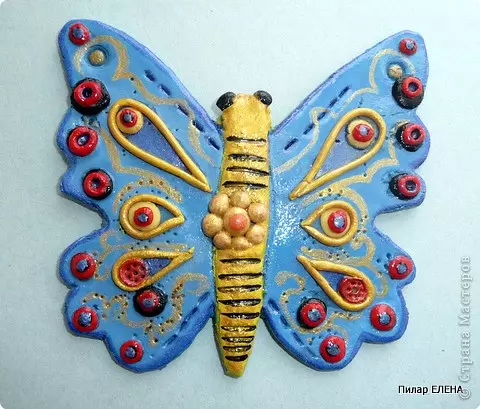
Video on the topic
At the end of the article, we recommend to see the selection of master classes on this topic.
